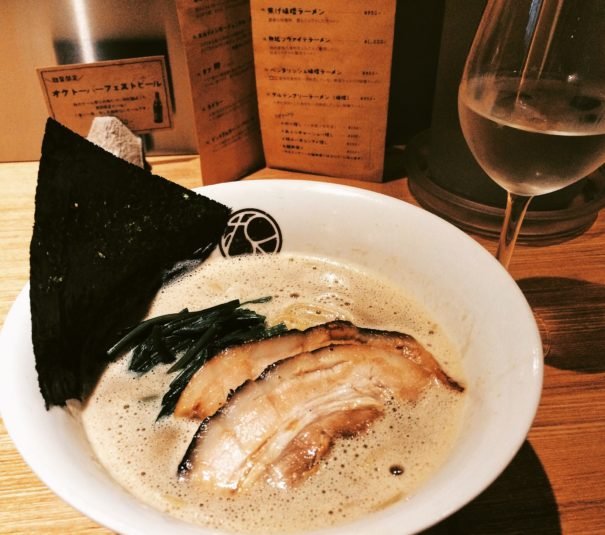
Sauerkraut and Ramen, Together At Last

Sauerkraut and Ramen, Together At Last
Ramen in Yokohama
I had come to Yokohama mostly for noodles. On the surface, the city, compared to Tokyo, seemed sleepier, grayer, less fervent, and I was only going to be here for six hours, tops. What else to do besides visit the Shin-Yokohama Ramen Museum?
I wasn’t a ramen fanatic. But noodles were a different beast altogether. They were a staple in my Chinese upbringing, and continue to be. The fact that I could slurp noodles—something I secretly love but have been told all my life was extremely rude—with wild abandon in Japan without the bat of an eyelid was something to delight in. And a ramen museum could only unlock more possibilities.
Ramen came to Japan via China. When Japan opened up its ports in 1859, interpreters from China came, which resulted in the formation of foreign settlements where Chinese restaurants lined the streets. Ramen was adapted from the Chinese lamian noodle. The difference is in the soup stock, or dashi: ramen dashi is never used for anything other than ramen.
At the Ramen Museum, one is immediately transported to 1958 Shōwa Period Japan, a hat-tip to the year the world’s first instant ramen was invented. With nine different hole-in-the-wall ramen shops, each specializing in one type of ramen, it was difficult to choose. Curious about the fusion styles, I decided to start with a German limited-edition pop-up.
Presented with a choice between a full-size bowl of ramen, or a half-size sample, I opted for the latter; there were many more noodles to try. Muku Zweite, the German shop that was only going to be at the Museum for a year and a half, served a German-inspired tonkotsu syoyu (pork bone/soy sauce) ramen. Imagine thick, straight noodles not unlike a fine spaghetti, and roughly-cut pork belly that melts in your mouth. Slightly oily like the Yokohama-originated liekei, the broth also had a delectable smoky aftertaste, with bits of sauerkraut floating around in the mix.
I moved on. Ramen is categorized into four types: shoyu, miso, shio, and tonkotsu, which are then further split into regional types. Miso was next on the list. Sumire claims to be the “most famous miso ramen shop in Japan.” This ramen had a slightly hard (yet very chewy), curvy, Hokkaido-style egg noodle that allowed the broth to take center stage. The miso was rich and fragrant, swimming with scallions and crunchy bamboo shoots. The cacophony of slurps was pleasing to the ears, people eating almost in tandem with one another, united in a love for ramen.
The museum allowed multiple entries on one ticket. I knew where I was going for lunch.